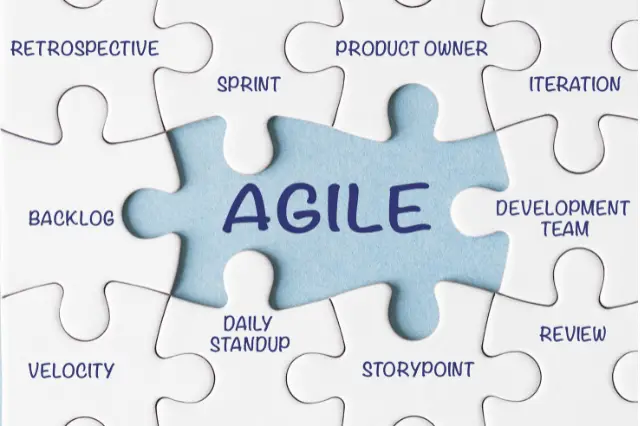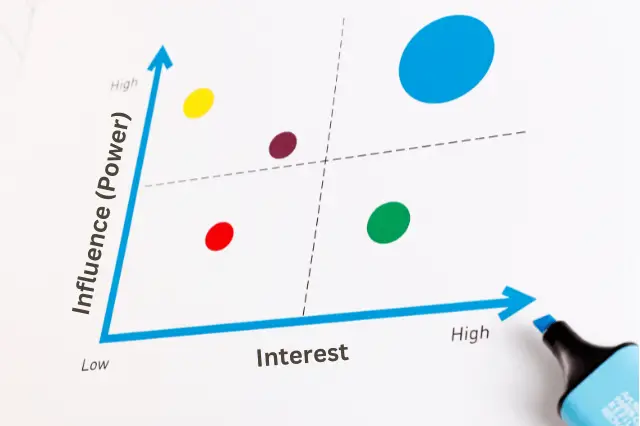Last Updated on September 16, 2025 by andrewshih
Have you ever wondered how communication inefficiencies can derail an entire project? Understanding the communication channel in project management is crucial to ensuring seamless information flow and project success.
In this article, we will explore what a communication channel is, its purpose, when to use it, and how it fits into the broader context of project management.
- What is Communication Channel?
- Purpose of Communication Channels
- When to Use Communication Channels
- Communication Channel in Project Management
- Advantages and Disadvantages
- Steps to Establish Effective Communication Channels
- Best Practices for Communication Channels
- Mistakes to Avoid
- Examples of Communication Channels in Action
- Formula: Calculating Communication Channels
- Communication Channels vs. Centralized Communication
- Tools for Managing Communication Channels
- Conclusion
- FAQ
Disclaimer: PMAspirant is a participant in the Amazon Services LLC Associates Program. Please review the full affiliate disclaimer.
What is Communication Channel?
A communication channel is a medium through which information is transmitted from one party to another within a project. These channels can be formal or informal, and they encompass various forms of communication, including face-to-face meetings, emails, phone calls, video conferences, and instant messaging.
The choice of communication channel can significantly influence the clarity, timeliness, and effectiveness of the information being conveyed.
Communication channels are categorized into three main types:
- Formal Channels: These include structured and official methods such as reports, official meetings, and documentation.
- Informal Channels: These involve casual interactions, such as impromptu conversations, chats, and informal meetings.
- Unofficial Channels: These are unofficial communication methods that occur outside the planned communication structure, like hallway conversations or social media interactions.
Purpose of Communication Channels
The primary purpose of communication channels is to facilitate the exchange of information, ideas, and feedback among project stakeholders. Effective communication channels ensure that everyone is on the same page, reduce misunderstandings, and help in the timely resolution of issues. Specific purposes include:
- Coordination: Ensuring that all team members are aligned and working towards common goals.
- Decision Making: Providing the necessary information to stakeholders to make informed decisions.
- Problem Solving: Facilitating discussions to address and resolve issues promptly.
- Documentation: Keeping a record of communications for future reference and accountability.
- Engagement: Maintaining stakeholder involvement and commitment throughout the project.
When to Use Communication Channels
Communication channels should be used throughout the project lifecycle.
Key stages include:
- Initiation Phase: To gather requirements and set expectations. For example, initial meetings with stakeholders to discuss project scope and objectives.
- Planning Phase: To develop project plans and communicate roles and responsibilities. Regular planning meetings and written project plans are essential during this phase.
- Execution Phase: To provide updates, address issues, and ensure team coordination. Daily stand-up meetings, status reports, and real-time messaging tools are commonly used.
- Monitoring and Controlling Phase: To track progress, report performance, and manage changes. Performance reports, change control boards, and progress meetings are vital here.
- Closing Phase: To review project outcomes and document lessons learned. Final project meetings, completion reports, and lessons learned documents are typical communication methods.
Communication Channel in Project Management
In project management, communication channels are vital for coordinating efforts and ensuring that information flows smoothly between team members, stakeholders, and clients. The choice of communication channel can significantly impact the efficiency and effectiveness of project communication. Key considerations include:
- Audience: Identify who needs the information and how they prefer to receive it.
- Message: Determine the nature of the information being conveyed and its complexity.
- Timing: Decide when to share the information to be most effective.
- Confidentiality: Ensure that secure channels communicate sensitive information.
Advantages and Disadvantages
Advantages
-
Clarity: Provides a clear path for information flow. Well-defined channels ensure that the right information reaches the right people.
-
Efficiency: Reduces the time required to disseminate information. Streamlined channels enable quick and efficient communication.
-
Accountability: Tracks communication and ensures accountability. Documentation of communications holds team members accountable for their actions.
-
Flexibility: Adapts to different communication needs and preferences. Multiple channels allow for various methods of communication, catering to different styles and preferences.
Disadvantages
-
Complexity: Managing multiple channels can be challenging. Coordinating various communication methods can become complex, especially in large projects.
-
Miscommunication: Risk of information distortion or loss. Messages can be misunderstood or lost in translation if not communicated clearly.
-
Cost: Some channels may require significant investment in technology and training. High-tech communication tools can be expensive to implement and maintain.
-
Overload: Too many channels can lead to information overload. Excessive communication can overwhelm team members, leading to missed or ignored messages.
Steps to Establish Effective Communication Channels
- Identify Stakeholders: Determine who needs to be informed and involved. Conduct a stakeholder analysis to understand the communication needs and preferences of all parties involved.
- Select Appropriate Channels: Choose the right mix of communication tools based on the project’s needs. Consider the nature of the information, the audience, and the context when selecting communication channels.
- Define Communication Plan: Outline how and when communication will occur. Develop a detailed communication plan that specifies the methods, frequency, and responsible parties for each type of communication.
- Implement Tools: Set up the necessary technology and processes. Ensure that all required communication tools and platforms are in place and accessible to the team.
- Train Team Members: Ensure everyone knows how to use the communication tools effectively. Provide training and support to team members to ensure they are proficient in using the selected communication tools.
- Monitor and Adjust: Regularly review the effectiveness of communication channels and make adjustments as needed. Continuously assess and improve the communication process to address any issues or gaps.
Best Practices for Communication Channels
-
Clarity: Ensure that messages are clear and concise. Avoid jargon and use simple language to convey information effectively.
-
Consistency: Maintain a consistent communication schedule. Regular updates and meetings help keep everyone informed and aligned.
-
Feedback: Encourage and incorporate feedback from stakeholders. Create a culture of open communication where feedback is valued and acted upon.
-
Documentation: Keep records of important communications. Document key discussions, decisions, and actions to maintain a clear communication trail.
-
Technology: Leverage technology to enhance communication efficiency. Utilize advanced communication tools and platforms to streamline communication processes.
Mistakes to Avoid
-
Ignoring Stakeholders: Failing to communicate with all relevant parties. Ensure that all stakeholders are kept informed and engaged throughout the project.
-
Overcomplicating Channels: Using too many channels can confuse team members. Simplify communication by using a manageable number of effective channels.
-
Lack of Training: Not training team members on how to use communication tools. Provide adequate training and support to ensure that everyone is comfortable using the communication tools.
-
Inconsistent Updates: Providing irregular updates can lead to confusion and mistrust. Maintain a regular communication schedule to keep stakeholders informed and aligned.
Examples of Communication Channels in Action
- Weekly Team Meetings: Regular face-to-face or virtual meetings to discuss progress and issues. These meetings provide an opportunity for team members to share updates, raise concerns, and collaborate on solutions.
- Project Management Software: Tools like Asana or Trello for task management and updates. These platforms help teams track tasks, assign responsibilities, and monitor progress.
- Instant Messaging: Platforms like Slack for quick, informal communication. Instant messaging allows for real-time communication and quick resolution of issues.
- Email Updates: Regular email summaries to keep stakeholders informed. Email is a reliable method for sharing detailed information and formal updates.
Formula: Calculating Communication Channels
The formula to calculate the number of communication channels in a project is:

where n is the number of stakeholders. This formula helps project managers understand the potential complexity of communication within the project.
For example, if a project has 10 stakeholders, the number of communication channels would be:

Communication Channels vs. Centralized Communication
| Aspect | Communication Channels | Centralized Communication |
|---|---|---|
| Complexity | Can be complex with many stakeholders | Simplifies communication by centralizing information |
| Flexibility | Highly flexible | Less flexible |
| Cost | Varies based on tools used | Can be lower if using fewer tools |
| Information Flow | Multi-directional | Typically uni-directional |
Tools for Managing Communication Channels
- Microsoft Teams: For collaborative communication and document sharing. Teams offer features like chat, video conferencing, and file sharing, making it a versatile communication tool.
- Zoom: For virtual meetings and webinars. Zoom provides high-quality video and audio communication, making it ideal for remote team meetings and presentations.
- Slack: For instant messaging and quick updates. Slack allows for real-time communication and integrates with other tools, enhancing team collaboration.
- Asana: For project management and task tracking. Asana helps teams organize tasks, set deadlines, and track progress, ensuring that everyone is on the same page.
Conclusion
Effective communication channels are the backbone of successful project management.
By understanding and implementing the right communication channels, project managers can ensure that information flows seamlessly, keep stakeholders informed, and achieve project goals efficiently.
Always regularly review and adjust your communication strategies to meet the evolving needs of your project.
FAQ
How do I choose the best communication channel for my project?
To choose the best communication channel, consider the nature of your message, the preferences of your stakeholders, the urgency of the information, and the available resources. For instance, urgent updates may be best communicated via instant messaging or phone calls, while detailed reports might be better suited for email or project management software.
Can a project have too many communication channels?
Yes, having too many communication channels can lead to confusion and information overload. It’s important to streamline your communication channels to ensure that information is easily accessible and not lost among multiple platforms.
How can I ensure my communication channels remain effective throughout the project?
Regularly review and adjust your communication strategies. Solicit feedback from team members and stakeholders to identify any issues and make necessary improvements. Keeping communication consistent and clear is key to maintaining effectiveness.
What role does feedback play in communication channels?
Feedback is crucial as it helps to identify communication gaps and improve the efficiency of communication channels. Encouraging regular feedback ensures that communication remains effective and meets the needs of all stakeholders.
How do I handle communication with external stakeholders?
For external stakeholders, it’s important to establish clear communication protocols. Use formal communication channels such as emails, official reports, and scheduled meetings. Ensure that external stakeholders are kept informed of key project developments and milestones.
What are the risks of not properly managing communication channels in a project?
Poorly managed communication channels can lead to misunderstandings, missed deadlines, decreased team morale, and ultimately project failure. It’s essential to have a well-thought-out communication plan to mitigate these risks.
How can I measure the effectiveness of my communication channels?
You can measure effectiveness by tracking response times, the clarity of received messages, stakeholder engagement, and the frequency of communication-related issues. Surveys and feedback sessions can also provide insights into how well your communication channels are working.
What is the impact of cultural differences on communication channels?
Cultural differences can significantly impact communication styles and preferences. It’s important to be aware of these differences and adapt your communication strategies accordingly. This might involve varying your communication channels to accommodate different cultural norms and practices.



